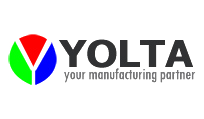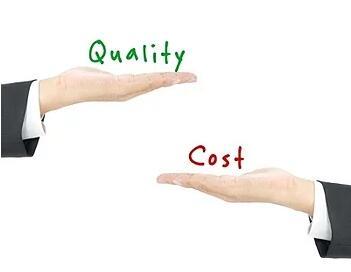Why some importers still receive poor quality when sourcing products from China
China has come a long way from its modest beginnings as a manufacturing-focused economy. And if history is any indication, the country will likely continue along its current path toward becoming even more competitive.
But if Chinese factories can compete with foreign ones in product quality, why do many importers sourcing from China continue to receive poor quality products?
Buyer demand for low prices yields poor quality products
Most importers want the highest product quality, while simultaneously pushing their supplier for the lowest possible price.
But most of these importers don’t recognize that poor quality is often introduced by design, not necessity. This is where the old adage, “you get what you pay for”, applies.
Let’s say you want to manufacture 3,000 Bluetooth speakers at a factory in Shenzhen. You visit the supplier’s showroom and see a dazzling array of beautiful audio accessories and equipment.
Impressed with what you see, you decide to work with this supplier. And after repeated negotiation for the supplier’s lowest possible price, you put a deposit down on the first order.
When you finally receive the finished goods, you’re distraught to find that your product bears little resemblance to the speakers you saw in the showroom. Your Bluetooth speakers are made with far lower-grade components than you expected and many are defective.
This story is all too familiar to importers who’ve ever pushed their supplier too hard to reach the lowest price.
A reduction in price is almost always met with a similar reduction in the quality of the finished goods. When you demand a lower price for your product, this pressure often forces your supplier to make cuts in the face of lower margins, leading to lower quality products.
Lack of clear product specifications
Have you ever been frustrated by vague or incomplete instructions?
If you’re like most of us, trying to complete a task without clear direction typically leads to different results than intended. Similarly, importers who don’t adequately clarify product requirements often receive goods that don’t meet their expectations.
You create uncertainty about your requirements when you omit details from a purchase order, CAD design or other specification. Your Chinese supplier may take it upon themselves to “fill in the gaps” in response, guessing at what you want, rather than directly asking you to clarify.
And you’ll often receive a product made with the wrong parts or materials or with quality defects or other nonconformities as a consequence.
One of the most common reasons for receiving poor quality products is
simply a failure on the importer’s part to verify product quality prior
to shipment.
Even if you follow all the above steps to clarify your requirements,
you’ll still need to conduct a pre-shipment inspection to confirm the
goods meet your requirements.
A second mistake importers often make is solely relying on factory QC
staff for this pre-shipment inspection. Experienced importers rarely
rely on factory QC staff due to:
Reliably verifying product quality before shipment is a key part of successfully sourcing products from China.
Some product defects will nearly always slip through the cracks
during mass production. But an independent, pre-shipment inspection
gives you the opportunity to identify and address any quality issues
before they affect your customers.
Factories in China sometimes churn out cheap, poor quality products.
But many are indeed capable of manufacturing products that are both high
tech and high quality. In fact, many importers continue to find success
sourcing products from China, even as manufacturing wages continue to
climb there.
The next time you’re considering working with a supplier in China,
think about how the price you’re asking for might affect quality. If you
push for a very low price with a relatively low order quantity, you may
be disappointed with poor quality products.
Be clear about your expectations from the beginning and before
placing an order. Work with your supplier and QC team to develop a
detailed checklist for your product that leaves no questions left
unanswered.
And remember, high quality goods are made in China every day—you only have to be willing to pay for them.
Failure to verify quality of Chinese products with inspection
Conclusion


 Back
Back







